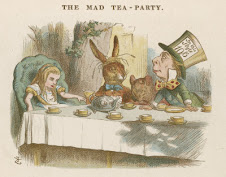Ironically, however, the Democratic and Republican parties have become strong supporters of proportional representation for their own internal party processes, for example, in the awarding of delegates to select their presidential nominees. You may be surprised to learn that the parties have quietly implemented proportional representation in their presidential nominee selection process over the course of the last four years. An article in the Financial Times provides a fair amount of detail on the issue. Excerpt:
With many US states shifting next year to a proportional voting system, making it harder for any candidate to lock up the nomination early, the Republican battle could mirror the drawn-out Democratic party contest between Barack Obama and Hillary Clinton in 2008 . . .
While the Democratic nomination contest three years ago created a bitter divide between the rivals, Republicans admired the party’s proportional voting system, which meant Mr Obama did not win the ticket until June.
Republican chiefs thought the process strengthened the candidates by forcing them to set up campaigning infrastructure in all 50 states and explaining themselves to the electorate . . .
The new rules are complicated and some are still unclear. All states that hold caucuses and primaries before April 1 are supposed to use a proportional representation system to allocate their delegates, who proceed to the party convention in August where the nominee is chosen.Does anyone out there know any more of the details of how these rule changes have been implemented? If the parties have begun to use proportional representation to choose their presidential nominees, that provides a strong lever to make the case for proportional representation in government itself.
Under the previous winner-takes-all system, the candidate who came first in a state would win all of its delegates. In states with proportional voting, if one candidate won 40 per cent of the vote in New Hampshire and another candidate 25 per cent, they would get 40 and 25 per cent of the delegates respectively.







6 comments:
While I'm not sold on PR... I can at least understand the logic of people who are for it. What I'm not seeing is how you're making this out to be proportional representation. It's not the same thing at all. They're not selecting multiple candidates to represent them, they're splitting their delegates up. We don't get multiple presidents.
Well it is PR, just not PR used for any legislative body. The delegates are representing party members, and they're being selected via a proportional method, rather than the traditional "50 + 1 gets all the delegates". I wasn't aware though the Repubs were switching to it, though I knew the Dems have utilized it since the 90s.
Sol, it's "proportional representation" in the sense that their delegates will be split up between multiple candidates in proportion to the support for those candidates. The state's primary voters are being proportionally represented by the delegates to their conventions. As TF says, they are using a "proportional method" rather than the idiotic "50% + 1 vote = 100%" formula.
The fact that the duopoly parties have begun using this method allows for arguments such as: if proportional representation is good enough to elect a presidential nominee, it is good enough to elect a congressional/state-legislative delegation.
"Splitting their delegates up" *is* proportional representation.
You do bring up a good point though, in that unitary offices are not amendable to PR methods. The more seats per electorate, the more proportional the method. If there's just one seat, there is no proportionality, and you're left to focus on finding a single, preferably consensus, choice.
FairVote has written a considerable amount on this issue, especially the recent Republican "conversion" to the proportional allocation of delegates. Part of what's going on here seems to be an attempt to discourage state parties to hold early primaries and caucuses (as several Democratic state parties attempted to do in 2008, remember Michigan and Florida?).
The fact is that if the Dems had a winner-take-all primary and caucus system, Hilary Clinton would have been the Democratic nominee. And the Democratic Party's minimum threshold of 15% for the awarding of any delegates is a pretty steep climb. The Repubs appear to be holding to that minimum as well.
First, there are several different types of proportional representation voting systems. Voters could use one type of system for electing the members of the House of Representatives. In the Senate, voters could use the Alternative Vote (a non-proportional but rank ballot system). The same could be done for electing the president if a constitutional amendment were implemented.
Next, PR would not only diversify the number of political parties, it would also diversify the type of people being elected. We could see more women, Black/African-Americans, and Latino-Americans being elected.
Post a Comment